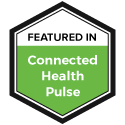3 minute read:
The Healthcare.gov open enrollment period for the 2021 tax year will begin on November 1, 2020, and will run through December 15. Surprisingly, premiums are down and insurers are expanding.
Despite the unprecedented pandemic, COVID-19 has had minimal impact on the cost of premiums for health plans being offered through the Healthcare.gov exchange. In fact, decreases in premium coverage will not be uncommon, and for the plans in certain states that do rise, these increases will be minor. In a post by NPR, Colorado insurance broker Louise Norris stated, “It’s the third year in a row with premiums staying pretty stable.”
A recent brief from the Kaiser Family Foundation (KFF) states that “most premium changes on the ACA marketplaces will be modest heading into 2021, even with the uncertainty surrounding the pandemic.” Adding that “majority of rate changes for 2021 are still moderate, with increases or decreases of a few percentage points.”
Some states will also see more options due to insurers expanding health care options in the space. Large carriers such as Cigna are expanding plan offerings and locations by 50% next year, with individual and family plans in 220 counties across 10 different states.
Similarly, Centene Corporation is expanding its ACA plan offerings into 400 new counties across 13 states in 2021. Centene President Michael Neidorff said, “At a time when many Americans are grappling with the health and economic effects of COVID-19, it is critical that we leverage our scale, capabilities, and expertise to provide accessible, high-quality healthcare services to our members.”
Remember, depending on where individuals live, the length of open enrollment may be longer than 45 days on certain state exchanges.
With premiums virtually unaffected, states expanding Medicaid and insurers continuing to expand their choice of ACA health insurance plans, the ACA looks strong heading into the new year. And If Biden wins the November election, it is expected the healthcare law will receive even greater support as well.
While many Americans may receive coverage through either a state or federal health exchange, KFF notes that roughly 49% or 156 million Americans receive healthcare coverage through their employer. While this number is down from previous years, employers still play a crucial role in administering healthcare, and must adhere to the Employer Shared Responsibility Provisions, also known as the Employer Mandate.
As a reminder to employers in conjunction with the Employer Shared Responsibility Payment (ESRP), the ACA’s Employer Mandate, Applicable Large Employers (ALEs), organizations with 50 or more full-time employees and full-time-equivalent employees, are required to offer Minimum Essential Coverage (MEC) to at least 95% of their full-time workforce (and their dependents) whereby such coverage meets Minimum Value (MV) and is affordable for the employee, or be subject to Internal Revenue Code (IRC) Section 4980H penalties.
Employers should be aware if an employee elects to go to the exchange and receives a Premium Tax Credit (PTC), your organization could be faced with significant IRS penalties presented in the agency’s Letter 226J penalty notice.
To learn more about how to respond to Letter 226J, click here.







